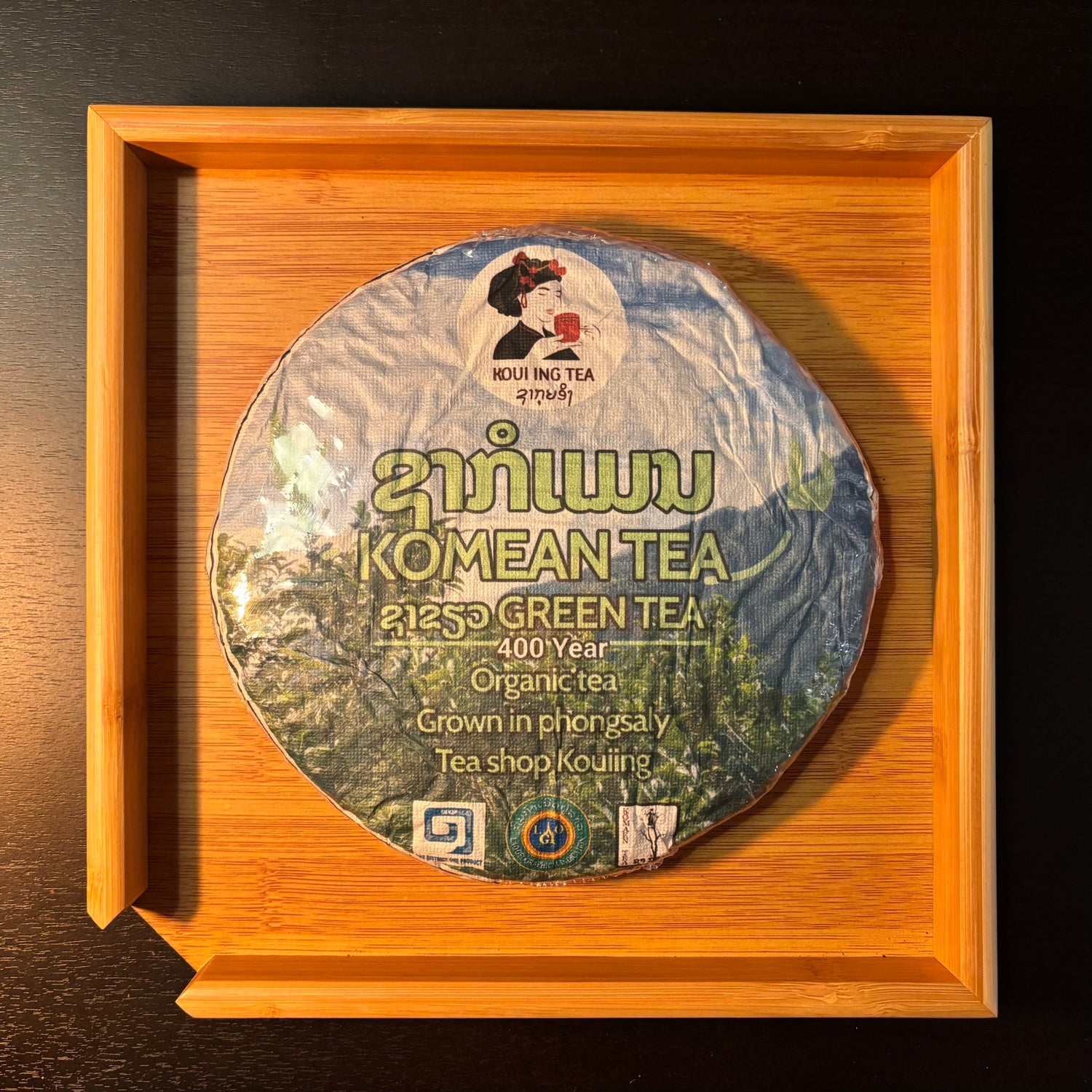Subscribe and save 10%!
424 products
424 products
Sort by:


'A Purple Trio' Goa Bean, Chili & Thai Eggplant
'A Purple Trio' Goa Bean, Chili & Thai Eggplant


'Sweetleaf®' / Sweetleaf 30-50 cm (Rubus chingii var. suavissimus)
295 SEK
Unit price per'Sweetleaf®' / Sweetleaf 30-50 cm (Rubus chingii var. suavissimus)
295 SEK
Unit price per
2st Lång Drivbänk i Impregnerad Furu med takluckor 200x50x35 cm
3 775 SEK
Unit price per2st Lång Drivbänk i Impregnerad Furu med takluckor 200x50x35 cm
3 775 SEK
Unit price per
400 Year Old Organic Tea | Green Pu'erh Tea from the Phu Noi people's 400-year-old tea plantation
400 Year Old Organic Tea | Green Pu'erh Tea from the Phu Noi people's 400-year-old tea plantation

African Cabbage / Spiderwisp (Cleome gynandra)
35 SEK
Unit price perAfrican Cabbage / Spiderwisp (Cleome gynandra)
35 SEK
Unit price per
Sweet Chestnut Tree 100-125 cm (Castanea sativa)
From 495 SEK
Unit price perSweet Chestnut Tree 100-125 cm (Castanea sativa)
From 495 SEK
Unit price per
Sweet Chestnut Tree 100-125 cm (Castanea sativa)
5 995 SEK
Unit price perSweet Chestnut Tree 100-125 cm (Castanea sativa)
5 995 SEK
Unit price per
Common Comfrey (Symphytum officinale)
40 SEK
Unit price perCommon Comfrey (Symphytum officinale)
40 SEK
Unit price per
True Comfrey Plant 20-40 cm (Symphytum officinale)
True Comfrey Plant 20-40 cm (Symphytum officinale)

Real Walnut Tree 60-80 cm (Juglans regia)
5 695 SEK
Unit price perReal Walnut Tree 60-80 cm (Juglans regia)
5 695 SEK
Unit price per
Real Walnut Tree 60-80 cm (Juglans regia)
From 275 SEK
Unit price perReal Walnut Tree 60-80 cm (Juglans regia)
From 275 SEK
Unit price perAmerikansk Sekvoja 'Adpressa' 25-30 cm (Sequoia sempervirens)
235 SEK
Unit price perAmerikansk Sekvoja 'Adpressa' 25-30 cm (Sequoia sempervirens)
235 SEK
Unit price per
Amerikanskt Blåbär 'Northland': Självfertil Sort 40-50 cm (Vaccinium corymbosum)
265 SEK
Unit price perAmerikanskt Blåbär 'Northland': Självfertil Sort 40-50 cm (Vaccinium corymbosum)
265 SEK
Unit price per
Eastern Redbud / Judas Tree 70-100 cm (Cercis canadensis)
1 125 SEK
Unit price perEastern Redbud / Judas Tree 70-100 cm (Cercis canadensis)
1 125 SEK
Unit price per
Eastern Redbud / Judas Tree 70-100 cm (Cercis canadensis)
675 SEK
Unit price perEastern Redbud / Judas Tree 70-100 cm (Cercis canadensis)
675 SEK
Unit price per
American Cranberry 'Early Black' Plant C2 (Vaccinium macrocarpon)
245 SEK
Unit price perAmerican Cranberry 'Early Black' Plant C2 (Vaccinium macrocarpon)
245 SEK
Unit price per
American Cranberry 'Pilgrim' Plant C2 (Vaccinium macrocarpon)
285 SEK
Unit price perAmerican Cranberry 'Pilgrim' Plant C2 (Vaccinium macrocarpon)
285 SEK
Unit price per
Pineapple Guava / Feijoa Tree 20-30 cm (Acca sellowiana)
From 285 SEK
Unit price perPineapple Guava / Feijoa Tree 20-30 cm (Acca sellowiana)
From 285 SEK
Unit price per
Ankle boots for children | Ankle boots CLEAN KIDS size 24/25-34/35
385 SEK
Unit price perAnkle boots for children | Ankle boots CLEAN KIDS size 24/25-34/35
385 SEK
Unit price per
Annatto tree / Achiote (Bixa orellana)
40 SEK
Unit price perAnnatto tree / Achiote (Bixa orellana)
40 SEK
Unit price perOther departments
Seeds from unusual and ancient cultivated plants are found here. Many of the plants have long been used by man for their useful properties - it may be about edibles as well as medicinal and household properties.
All seed varieties in the store contribute to a functional addition to the cultivation. Our seeds consist of open-pollinated and hand-pollinated heirloom varieties, we believe that a genetic diversity in the garden contributes to a healthier ecosystem that extends beyond the borders of our cultivations.
Plants are divided based on their different functions and characteristics - e.g. "Fruits & Berries" and "Medicinal plants" - via the filtering function on the right (below on mobile).
Plant history and cultivation description are available for all seeds.
NOTE. More unusual varieties are on the way!
Here you will find seedlings, cuttings & trees of different kinds of useful and unusual plant species!
Plants are divided based on their different functions and properties - e.g. "Overwinters outdoors" and "Nut Trees" - via the filtering function on the right (below on mobile).
We both grow our trees, shrubs & plants ourselves as well as buy in from other suppliers within the EU.
Plant history and cultivation description are available for all plants.
NOTE. More unusual varieties are on the way!
Here you will find both super beautiful shoe models that are created specifically for gardening time and also other models that are well suited for different occasions in the garden. After our own search for good gardening shoes, we found the brand Rouchette, where we especially came to love their ankle boots insulated with neoprene. for the warmth and comfort they provide.
They have also designed a practical sole where no soil gets stuck and is taken into the home - the Frotte&Go system, exclusively developed and used by Rouchette. Rouchette is a family business from France for which we have become a dealer for good reason.
Without exaggeration, these are the most comfortable and practical boots we have ever had. That's where the idea came from to share their usefulness with other growers. The ankle boots are also great for the stable.
You can use the filter function below on the left to easily find the shoes you are looking for.

Holy Basil / Tulsi (Ocimum tenuiflorum)
35 SEK
Unit price per
Indian Ginseng / Ashwagandha (Withania somnifera)
35 SEK
Unit price per
Toothache Plant / Szechuan Buttons (Acmella oleracea)
35 SEK
Unit price per
Culantro / Ngò Gai (Eryngium foetidum)
35 SEK
Unit price per





















